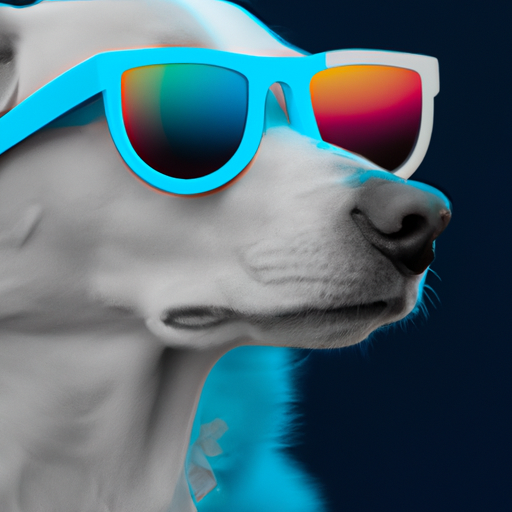Understanding the Canine Vision
If you’ve ever wondered how your beloved four-legged friend sees the world, you’re not alone. You’re in a journey of understanding the world from your canine companion’s perspective. Contrary to popular belief, dogs don’t see the world in black and white. Let’s delve into the science behind their vision.
Dogs, like humans, have ‘cones’ in their eyes – these are photoreceptor cells that perceive color. But while we have three types of cones that allow us to see a broad spectrum of colors, dogs only have two. This means their color vision is somewhat similar to a human with red-green color blindness.
How Dogs Perceive Colors
To get a better idea of how your dog sees colors, imagine seeing the world in a twilight haze. That’s not to say they have poor vision – it’s just different. Here’s a simplified breakdown:
- Blue and yellow: These colors are well perceived by dogs.
- Red and green: These colors might appear as shades of blue and gray to dogs.
- Violet: Dogs perceive this as blue.
- Blue-Green: Dogs see this as white or gray.
The Brightness and Sharpness of a Dog’s Vision
Compared to humans, dogs see the world with less brightness and sharpness. But don’t let this worry you. What they lack in color perception, they make up for with superior night vision and motion detection.
- Brightness perception: A dog’s world is half as bright as a human’s.
- Visual acuity: Dogs’ visual acuity is around 20/75. This means what we can see clearly from 75 feet away, they would need to be 20 feet away to see with the same clarity.
How Color Perception Affects Dog Behavior
How dogs see colors can impact their behavior and training. For instance, if you’re using colored toys or training aids, it’s beneficial to know which colors your dog can easily distinguish.
| Color | Perception | Ideal For |
|---|---|---|
| Blue | Easily visible | Toys, Training Aids |
| Yellow | Easily visible | Toys, Training Aids |
| Red | Difficult | Less Ideal for Toys |
| Green | Difficult | Less Ideal for Toys |
Frequently Asked Questions
Here are some quick answers to commonly asked questions about dogs and their color vision.
Q: Do dogs see in the dark better than humans?
A: Yes, dogs have superior night vision compared to humans thanks to a structure called the tapetum lucidum.
Q: Can dogs see television?
A: Yes, but differently than humans. They may not perceive all the colors and details, but they can follow the movements.
Q: What color is most visible to dogs?
A: Blue and yellow are the most visible colors to dogs.
By understanding how dogs perceive the world, we can better cater to their needs and enrich their lives. After all, our four-legged friends deserve the best!



